
Polytetrafluoroethylene (PTFE) is a synthetic fluoropolymer of tetrafluoroethylene that has numerous applications. The commonly known brand name of PTFE-based composition is Teflon by Chemours, a spin-off from DuPont, which originally discovered the compound in 1938.
E. I. du Pont de Nemours and Company, commonly referred to as DuPontalso, was an American company that was founded in July 1802 in Wilmington, Delaware, as a gunpowder mill by French-American chemist and industrialist Éleuthère Irénée du Pont de Nemours.

Cookware and bakeware is food preparation equipment, such as cooking pots, pans, baking sheets etc. used in kitchens. Cookware is used on a stove or range cooktop, while bakeware is used in an oven. Some utensils are considered both cookware and bakeware.

Perfluorooctanoic acid (PFOA) — also known colloquially as C8 — is a perfluorinated carboxylic acid produced and used worldwide as an industrial surfactant in chemical processes and as a material feedstock. PFOA is considered a surfactant, or fluorosurfactant, due to its chemical structure, which consists of a perfluorinated, n-octyl "tail group" and a carboxylate "head group". The head group can be described as hydrophilic while the fluorocarbon tail is both hydrophobic and lipophobic. The tail group is inert and does not interact strongly with polar or non-polar chemical moieties; the head group is reactive and interacts strongly with polar groups, specifically water. The "tail" is hydrophobic due to being non-polar and lipophobic because fluorocarbons are less susceptible to the London dispersion force than hydrocarbons.
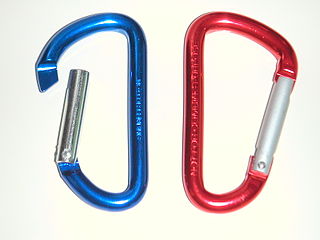
Anodizing is an electrolytic passivation process used to increase the thickness of the natural oxide layer on the surface of metal parts.
Cooking spray is a spray form of an oil as a lubricant, lecithin as an emulsifier, and a propellant such as food-grade alcohol, nitrous oxide, carbon dioxide or propane. Cooking spray is applied to frying pans and other cookware to prevent food from sticking. Traditionally, cooks use butter, shortening, or oils poured or rubbed on cookware. Most cooking sprays have less food energy per serving than an application of vegetable oil, because they are applied in a much thinner layer: US regulations allow many to be labelled "zero-calorie"; in the UK sprays claim to supply "less than 1 calorie per serving". Popular US brands include Pam, Crisco, and Baker's Joy. Sprays are available with plain vegetable oil, butter and olive oil flavor.

Heavy-duty cookware made of cast iron is valued for its heat retention, durability, ability to be used at very high temperatures, and non-stick cooking when properly seasoned. Seasoning is also used to protect bare cast iron from rust. Types of cast iron cookware include frying pans, dutch ovens, griddles, waffle irons, flattop grills, panini presses, crepe makers, deep fryers, tetsubin, woks, potjies, and karahi.

Meyer Corporation is a cookware distributor based in Vallejo, California, United States, whose parent company is Hong Kong based Meyer Manufacturing Co. Ltd. It is the largest cookware distributor in the United States and second largest in the world. The company was founded in 1981. Cookware labels or lines for which Meyer is the parent firm include Circulon, Anolon, the now defunct Steelon range, NapaStyle, SilverStone, Rachael Ray, Paula Deen, Cake Boss, Ruffoni, Ayesha Curry, Joe Wicks, Breville Cookware, Prestige and BonJour. Meyer owns the license for cookware produced under the Farberware label in addition to producing private label cookware for Macy's and Sur La Table.
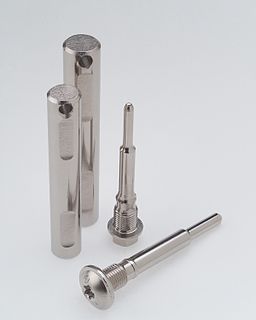
Electroless nickel-phosphorus plating is a chemical process that deposits an even layer of nickel-phosphorus alloy on the surface of a solid substrate, like metal or plastic. The process involves dipping the substrate in a water solution containing nickel salt and a phosphorus-containing reducing agent, usually a hypophosphite salt. It is the most common version of electroless nickel plating and is often referred by that name. A similar process uses a borohydride reducing agent, yielding a nickel-boron coating instead.

Tefal is a French cookware and small appliance manufacturer, owned by Groupe SEB since 1968. Its name is a portmanteau of the words TEFlon and ALuminium. The company is known for creating the non-stick cookware category and for offering frying equipment with a low requirement of fat or oils.

Automotive paint is paint used on automobiles for both protective and decorative purposes. Water-based acrylic polyurethane enamel paint is currently the most widely used paint for reasons including reducing paint's environmental impact.

Marion A. Trozzolo was an innovator, inventor, entrepreneur, and professor of business at Rockhurst University in Kansas City, Missouri. He was the first manufacturer of teflon coated cookware in the United States, and was the developer of the Kansas City entertainment district River Quay.
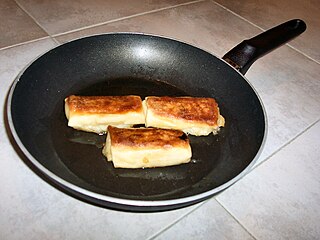
A non-stick surface is a surface engineered to reduce the ability of other materials to stick to it. Non-stick cookware is a common application, where the non-stick coating allows food to brown without sticking to the pan. Non-stick is often used to refer to surfaces coated with polytetrafluoroethylene (PTFE), a well-known brand of which is Teflon. In the twenty-first century, other coatings have been marketed as non-stick, such as anodized aluminium, silica, enameled cast iron, and seasoned cookware.
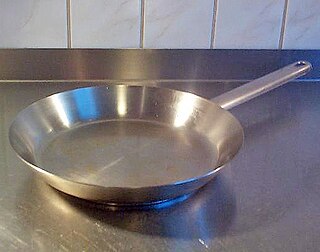
A frying pan, frypan, or skillet is a flat-bottomed pan used for frying, searing, and browning foods. It is typically 20 to 30 cm in diameter with relatively low sides that flare outwards, a long handle, and no lid. Larger pans may have a small grab handle opposite the main handle. A pan of similar dimensions, but with less flared, more vertical sides and often with a lid, is called a sauté pan. While a sauté pan can be used as a frying pan, it is designed for lower heat cooking methods, namely sautéing.

Seasoning or curing is the process of coating the surface of cookware with a bioplastic formed from heated fat or oil in order to produce a heat, corrosion, and stick resistant hard coating. It is required for cast-iron cookware and carbon steel, which otherwise rust rapidly in use, but is also used for many other types of cookware, as it helps prevent food sticking.
Xylan is a fluoropolymer-based industrial coating, most commonly used in non-stick cookware. Generally, it is applied in a thin film to the target material to improve its durability and non-stick properties.
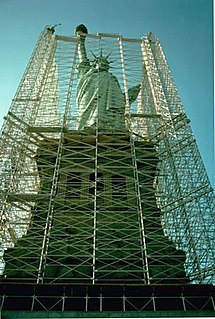
A centennial conservation-restoration of the Statue of Liberty occurred between 1984 and 1986. The Statue of Liberty, by French sculptor Frédéric Auguste Bartholdi, is a colossal sculpture on Liberty Island in New York Harbor and is a part of the Statue of Liberty National Monument. Much of the restoration effort was based on unprecedented restorative methods, as metallurgical repair work on such a large scale had never been attempted. Many scientists, engineers, government organizations, and professional consultants evaluated and dealt with the various problems and tasks facing the restoration effort.
In cooking several factors, including materials, techniques, and temperature, can influence the surface chemistry of the chemical reactions and interactions that create food. All of these factors depend on the chemical properties of the surfaces of the materials used. The material properties of cookware, such as hydrophobicity, surface roughness, and conductivity can impact the taste of a dish dramatically. The technique of food preparation alters food in fundamentally different ways, which produce unique textures and flavors. The temperature of food preparation must be considered when choosing the correct ingredients.
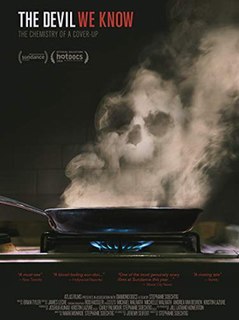
The Devil We Know is a 2018 investigative documentary film by director Stephanie Soechtig regarding allegations of health hazards from perfluorooctanoic acid, a key ingredient used in manufacturing Teflon, and DuPont's potential responsibility. PFAS are commonly found in every household, and in products as diverse as non-stick cookware, stain resistant furniture and carpets, wrinkle free and water repellant clothing, cosmetics, lubricants, paint, pizza boxes, popcorn bags, and many other everyday products.
Visions is a brand of transparent stove top cookware created by Corning France and introduced to Europe during the late 1970s. In 1983, it was introduced in the United States and became the number one selling cookware set for a number of years. Visions is made of Calexium, a transparent material belonging to the Pyroceram family of glass-ceramics. It is one of the few cookware lines that can be used on the range, in the oven, and under a broiler. It will withstand heat up to 850 °C (1,560 °F) with thermal traits similar to Corning Ware plus improved resistance to staining and the detrimental effects of acids and detergents. Visions is sold worldwide by Corelle Brands, LLC.














